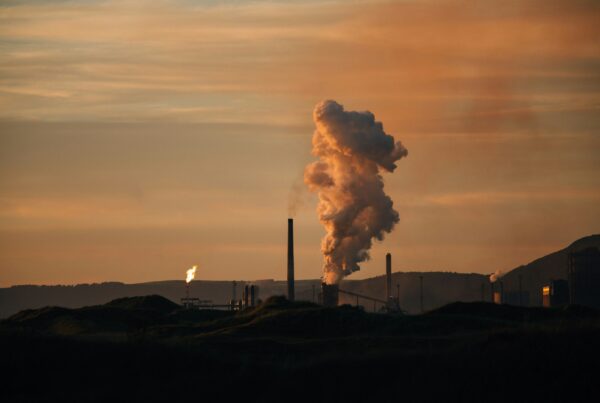By Guest Blogger: Donna Stewart
Part III in a four part series on Renewable Energy. See Part I, The Rising Tide of Renewable Energy and Part II, Solar Power: Who Came Up With That??
Ah, the Seventies! Paislies! Poofy smocks! Blondie, Queen and myriad reflectors (aka disco balls) spinning over the heads of bushy-headed, bell-bottom-ringing rockers. I wish I had a time machine so I could go hit just one night at Studio 54—rocking my own paisley-patterned bell-bottoms and fringed leather halter top. Just one night.
I was just digging into the history of solar power in the 1970s and apparently you can’t google anything 70s-related without getting some Studio 54 images popping up in the feed. At first glance it looks like the 70s were defined by wild parties, bad taste, Nixon and the Vietnam War. But take a second scroll and you’ll see a few headlines about something called “The Energy Crisis.”
In fact, I bumped right up against an article about how in 1979, President Jimmy Carter had solar panels installed on the White House in reaction to suffering two energy crises over the decade, but then President Ronald Reagan called them a joke and had them removed when he became president in the next election. A joke? Really? A researcher driven by a touch of OCD, I dove head first into the endless, swirling bog of text.
What I learned was that it wasn’t so much an “energy crisis” or a “gas shortage,” as much as an almost complete redefining and restructuring of world-wide power and alliances, and that these now understated energy crisis had far more of an impact on our world than Freddy Mercury wearing leather britches while cadenza-ing ‘We Are The Champions.’ Cars waited in line for hours at stations, then sometimes turned away. Signs were posted: “Pumps Closed.” “No Gas.” There was a “Don’t be Fuelish” campaign reminding people to be responsible with their energy usage during the “gas shortage.” In an effort to save fuel, interstate speed limits were dropped to, gasp, 55 mph.
Here’s the thing: There wasn’t a shortage. Select countries, including the United States, were denied or had their supplies significantly reduced by Middle Eastern suppliers in retaliation for our support of Israel, among other reasons. That’s when we found out what can happen when we become über dependent on something we can’t produce locally. It was also a huge check on Western arrogance. We thought we could strong arm the Middle East by flexing our big money. Turned out we couldn’t. We needed the oil and they knew it. They gave us less oil, then charged more for it. That’s my extremely pithy cliff note interpretation and it’s way, way, WAY more complicated than that. Check out the full story for yourself. It’s fascinating.
One good thing about it was that it sparked renewed interest in terrestrial applications for solar power. That’s when President Jimmy Carter had those 32 solar panels put on the white house.
Through the following decades, slow but steady progress continued. In 1991, President H.W. Bush created the National Renewable Energy Laboratory, funding real research on renewable energy. In 2001, while President George W. Bush was off clearing brush on his ranch, the National Park Service quietly dressed up a white house maintenance shed with 167 solar panels and two thermal solar systems for heating hot water. Since he never mentioned it, not sure Bush ever knew they were there, but still: Yay!
President Barack Obama was far more open about his support of renewable energy. In 2013, White House spokesman, Matt Lehrich, announced, “Continuing President Obama’s commitment to lead by example to increase the use of clean energy in the U.S., the White House has completed installation of American-made solar panels on the first family’s residence as a part of an energy retrofit that will improve the overall energy efficiency of the building.”
Speaking of American-made panels, most of the panels currently made in the world aren’t. Fortune Magazine says, “China is utterly and totally dominating solar panels.” They are the world’s largest manufacturer of solar panels at a time where markets are “predicted to expand by 13 percent a year,” according to a December article in Scientific American. The U.S. is a distant third. Even lagging behind, the solar industry in the United States is till impressive according to recent findings from the Solar Jobs Census 2016 :
- One out of every 50 new jobs added in the United States in 2016 was created by the solar industry
- Solar jobs in the United States have increased at least 20 percent per year for the past four years, and jobs have nearly tripled since the first Solar Jobs Census was released in 2010.
- Over the next 12 months, employers surveyed expect to see total solar industry employment increase by 10 percent to 286,335 solar workers. Last year the coal industry tallied 75,000 jobs.
- The solar industry added $84 billion to the US GDP in 2016
That’s all before the incorporation of significant advancements. Perovskites, a new material under research at Purdue University and the National Renewable Energy Laboratory, could create solar cells that are more flexible, allowing for broader applications, are also cheap and easy to make. They could double efficiency further driving down costs that, according to a study from Berkeley Labs, have just dropped for the seventh straight year in a row. Rumor has it, Audi has partnered with China to produce a solar rooftop “film” that will power ancillary operations for select vehicles, rolling out of the show rooms in 2018.
The real pickle, however, has always been how to store surplus energy for when ‘the sun don’t shine or the wind don’t blow. Tesla’s Elon Musk believes we are on the brink of rapid advances in energy storage so strongly that, in late March, he tweet-boasted he could deliver a battery solution to fix Australia’s notoriously cranky electrical system issues within 100 days – or it’s free. He also predicted the energy-storage market would grow at “twice the rate of the automotive business.” The next month, Tesla unveiled its sleek new solar panels that pair perfectly with…the Powerwall, Tesla’s sexy little, stackable battery, that promises to store sun from the day to light the night.
Do a search for solar power in google news and you’ll see a nice long list of big companies and government agencies signing contracts and installing solar, ahem, systems: Comcast, The United States Federal Reserve, Corvalis Airport, Indonesia, etc. etc. etc. Audi is partnering with China to leverage perovskite technology to develop a solar “film’ that will supply ancillary operations rolling out of the showrooms in 2018. It’s beautiful. Since the 70s, “we’ve come a long way, baby.”
Now, with nation’s all over the world committing to reduce the use of fossil fuels, some of them taking Musk’s offer seriously, Scientific American’s 13% market expansion prediction might just be sand-bagged. Between that and Hurricane Harvey’s recent decimation of U.S. oil production and shortages expected from that (as of this writing, gas prices have already started rising), If we don’t get more into this game…the joke may be on us. You “dig?”




